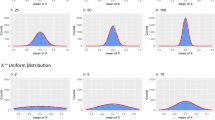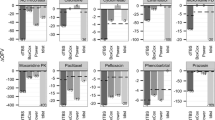Abstract
The connection between pharmacokinetic models and system theory has been established for a long time. In this approach, the drug concentration is seen as the output of a system whose input is the drug administered at different times. In this article we further explore this connection. We show that system theory can be used to easily accommodate any therapeutic regime, no matter its complexity, allowing the identification of the pharmacokinetic parameters by means of a non-linear regression analysis. We illustrate how to exploit the properties of linear systems to identify non-linearities in the pharmacokinetic data. We also explore the use of bootstrapping as a way to compare populations of pharmacokinetic parameters and how to handle the common situation of using multiple hypothesis tests as a way to distinguish two different populations. Finally, we demonstrate how the bootstrap values can be used to estimate the distribution of derived parameters, as can be the allometric scale factors.











Similar content being viewed by others
References
Bertrand J, Mentré F. Mathematical expressions of the pharmacokinetic and pharmacodynamic models implemented in the Monolix software. Tech Rep, INSERM U738, Paris Diderot University, 2008.
Cutler DJ. Linear systems analysis in pharmacokinetics. J Pharmacokinetics, Biopharmaceut. 1978;6:265–82.
Pedersen PV. Model-independent method of analyzing input in linear pharmacokinetic systems having polyexponential impulse response i: theoretical analysis. J Pharm Sci. 1980;69:298–305.
Pohjanpalo H. System identifiability based on the power series expansion of the solution. Math Biosci. 1978;41:21–33.
Weiss M, Föerster W. Pharmacokinetic model based on circulatory transport. Eur J Clin Pharmacol. 1979;16:287–93.
Schwilden H. A general method for calculating the dosage scheme in linear pharmacokinetics. Eur J Clin Pharmacol. 1981;20(5):379–86.
Sorzano COS, Pérez-De-La-Cruz Moreno MA, Burguet-Castell J, Montejo C, Aguilar Ros A. Cost-constrained optimal sampling for system identification in pharmacokinetics applications with population priors and nuisance parameters. J Pharm Sci. 2015;104(6):2103–9.
Sorzano C.O.S. A signal processing approach to pharmacokinetics, pharmacodynamics and biopharmaceutics data analysis, Ph.D. thesis, Univ. San Pablo CEU, 2015.
Bakar SK, Niazi S. Simple reliable method for chronic cannulation of the jugular vein for pharmacokinetic studies. J Pharm Sci. 1983;72:1027–9.
Gabrielsson J, Weiner D. Pharmacokinetic and pharmacodynamics data analysis: concepts and applications. 4th ed. Swedish pharmaceutical press, 2006.
Committee for Medicinal Products for Human Use (CHMP). Guideline on bioanalytical method validation, European Medicines Agency, 2011.
Sheskin DJ. Handbook of parametric and nonparametric statistical procedures, Chapman & Hall/CRC, 2004.
Mathews P. Sample size calculations, Mathews Malnar and Bailey, Inc. 2010.
Wakefield J, Aarons L, Racine-Poon A. The Bayesian approach to population pharmacokinetic/pharmacodynamic modeling. Case studies in Bayesian Statistics, pp205–265, 1999.
Matis JH. An introduction to stochastic compartmental models in pharmacokinetics. Pharmacokinetics. NATO ASI Series. 1988;145:113–28.
Acknowledgments
The authors wish to thank Justesa Imagen SAU to grant us the use of ICJ3393 experimental data. C.O.S. Sorzano is recipient of a Ramón y Cajal fellowship from the Spanish Ministry of Economy and Competitiveness.
Author information
Authors and Affiliations
Corresponding author
Additional information
Publisher’s Note
Springer Nature remains neutral with regard to jurisdictional claims in published maps and institutional affiliations.
At the time of the conception of the paper Kinestat Pharma
Keypoints
• We provide a discrete system approach to the analysis of pharmacokinetic data that considers any therapeutic regimen.
• The main advantage of this technique is that it does not require the analytical solution of a differential equation. In this way, it can be used in situations in which this explicit solution does not exist.
• This approach allows identifying non-linearities in pharmacokinetic data.
• This approach can easily be integrated with bootstrapping so that population-wide comparisons can be easily done. In this article we illustrate the use of the method to estimate the statistical distribution of derived parameters (like the parameters of an allometric scaling, which are based on the estimation of the primary pharmacokinetic parameters).
Rights and permissions
About this article
Cite this article
Sorzano, C.O.S., Moreno, M.A.PdlC., Martín, F.R. et al. A Signal Processing Approach to Pharmacokinetic Data Analysis. Pharm Res 38, 625–635 (2021). https://doi.org/10.1007/s11095-021-03000-4
Received:
Accepted:
Published:
Issue Date:
DOI: https://doi.org/10.1007/s11095-021-03000-4




